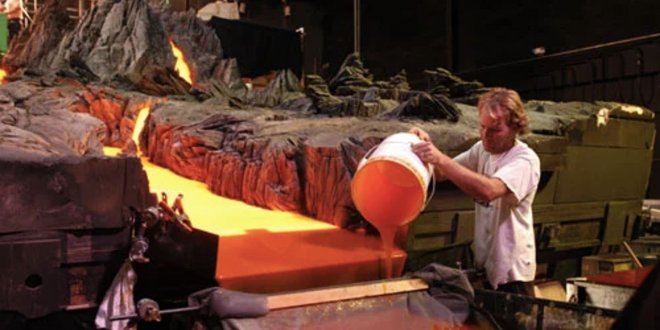
Summary
- The climactic duel on Mustafar in Revenge of the Sith broke a Star Wars record and paved the way for the technology used in The Mandalorian.
- The Star Wars prequel trilogy used more miniatures and models than the original trilogy, making the practical elements as convincing as anything from the original films.
- Mustafar, considered to be a digital setting, is actually Star Wars' largest model in history, with practical effects used to create the flow of lava.
The climactic duel on Mustafar shockingly broke a Star Wars record in Star Wars: Episode III – Revenge of the Sith, paving the way for the technology used in The Mandalorian. Heavily criticized for the extreme use of CG, the Star Wars prequel trilogy actually makes use of more miniatures and models than the original trilogy. With the scope and scale of the prequels being drastically bigger, poorly-aged CG environments stick out like a sore thumb, while the practical elements of the trilogy are as convincing as anything made for the original films.
Many would naturally assume that Mustafar was a CG creation, and they'd partially be correct. Behind the scenes footage of the lightsaber duel between Anakin and Obi-Wan shows mostly blue screen with markers used for the sets Hayden Christensen and Ewan McGregor worked on. The control room was entirely built, as were any other structures the actors had to interact with, and lava bursts were a mix of CG and real footage obtained by a crew sent to Mount Etna's eruption. To truly accomplish the look and feel of Mustafar, however, ILM's production team went old school – breaking a Star Wars record in the process.
Your browser does not support the video tag. Mustafar Is The Largest Model In Star Wars  What's largely considered an entirely digital setting is actually Star Wars' biggest model in history. Clocking in at 18 feet wide, 33 feet long, and seven feet high, per Paul Duncan's The Star Wars Archives: 1999 – 2005, Mustafar is far larger than the Death Star II model used for Return of the Jedi or a portion of the original Death Star's trench made for explosion effects. At the time of Revenge of the Sith's release, the model of Mustafar was largest of its kind in film history. While it could have been accomplished entirely through CG, going practical was deemed the more realistic approach.
What's largely considered an entirely digital setting is actually Star Wars' biggest model in history. Clocking in at 18 feet wide, 33 feet long, and seven feet high, per Paul Duncan's The Star Wars Archives: 1999 – 2005, Mustafar is far larger than the Death Star II model used for Return of the Jedi or a portion of the original Death Star's trench made for explosion effects. At the time of Revenge of the Sith's release, the model of Mustafar was largest of its kind in film history. While it could have been accomplished entirely through CG, going practical was deemed the more realistic approach.
ILM deemed it easier to nail the flow of lava through practical means, tasking the modeling group with developing a scaled version of Mustafar's full set. A special material was used for the rock formations, chipped away easily to create jagged incuts that looked like natural formations. Once complete, the model was tilted at 10 degrees, and ILM spent substantial time determining the mixtures of paint to use for the lava and crust. it was decided that the lava should flow quickly, making for the exciting sequence seen in the final version of the film.





